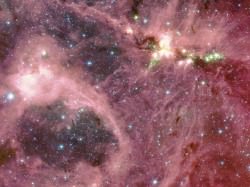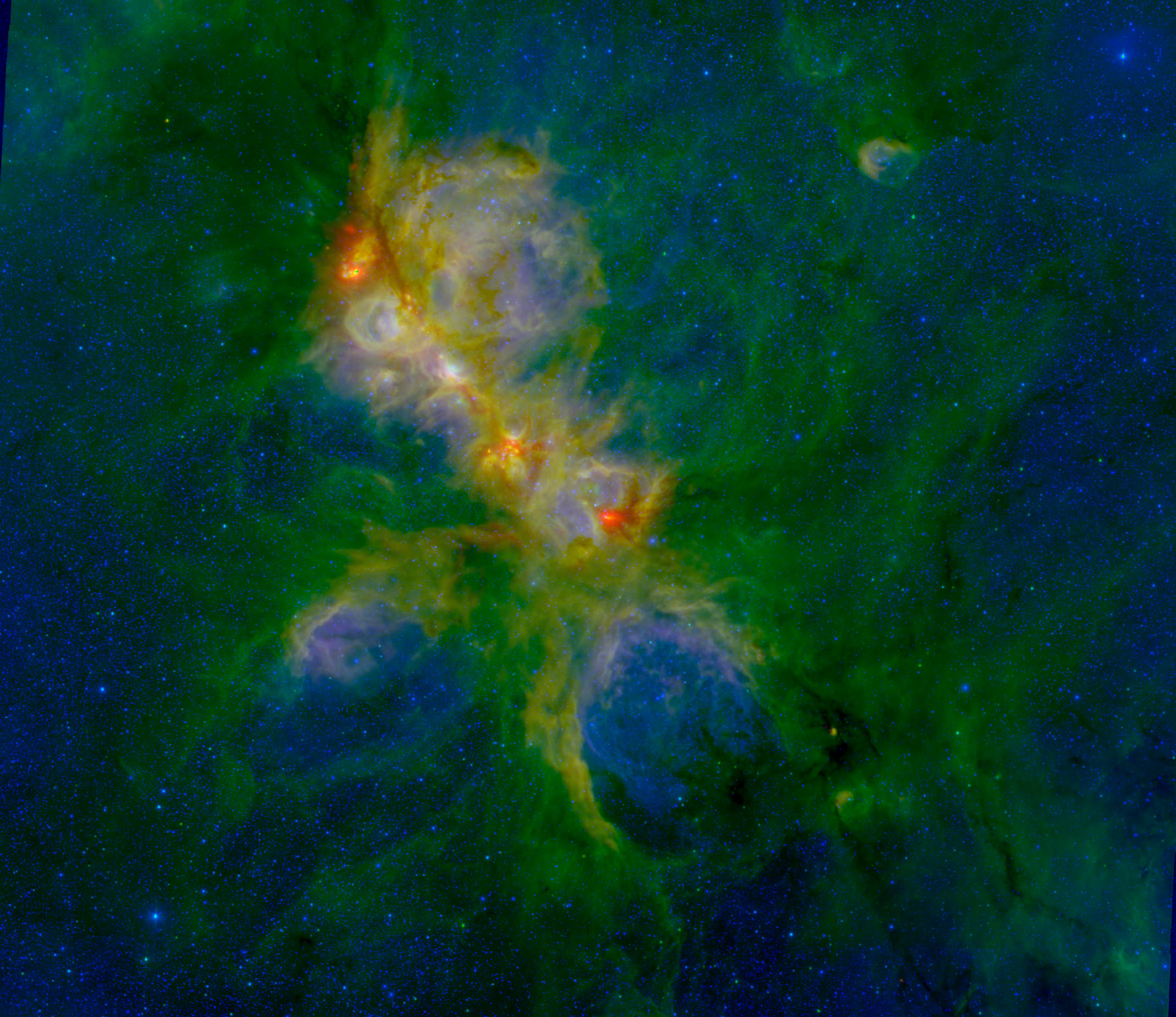A nebula named after a cat’s paw may be a stealthy spot for a lot of star birth. New observations of NGC 6334 revealed fainter stars than ever before seen, leading astronomers to believe there could be many star babies within the nebula.
You can see the results in the false-color picture above: red for new observations with the National Optical Astronomy Observatory’s Extremely Wide-Field Infrared Imager (NEWFIRM), green for the orbiting Spitzer Space Telescope and red for the Herschel Space Telescope that recently ended its mission.
“The observations acquired with NEWFIRM allowed us to identify and separate out the large number of contaminating sources, including background galaxies and cool stellar giants in the galactic plane to obtain a more complete census of the newly-formed stars,” stated Lori Allen, an NOAO team member.

A team led by Sarah Willis, a Ph.D. student at Iowa State University, recorded the stars they saw. Brightness ranged to about equivalent to our sun, to those that are a million times fainter. Then the scientists performed an extrapolation to determine how many lower-mass stars within the region.
“This is analogous to saying that if we observe the adult population in a town, we can estimate how many children live in the town, even if we can’t see them. In this way, the team can derive an estimate of the total number of stars in the region, and the efficiency with which stars are forming,” the NOAO stated.
Stars are often born in nebulas such as NGC 6334. Universe Today wrote a special feature on how stars are born a little while ago, and we also have covered starbirth regions such as this one and this one.

